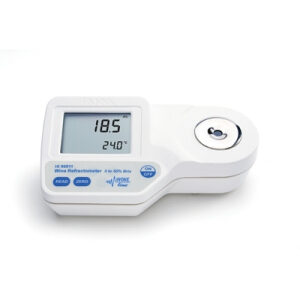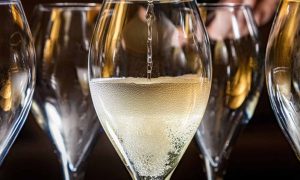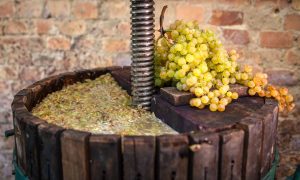The yeast metabolizes the sugar and produces alcohol and carbon dioxide as a waste product. The greater the sugar content, the greater the concentration of alcohol produced. If fermentation is allowed to go to the completeness and all the sugar is fermented, then the wine is considered dry.
Description:
Wine is made from the fermentation of the sugars found within grapes. Yeast cultures are added to the juice collected from the crushing of grapes. The yeast metabolizes the sugar and produces alcohol and carbon dioxide as a waste product. The greater the sugar content, the greater the concentration of alcohol produced. If fermentation is allowed to go to the completeness and all the sugar is fermented, then the wine is considered dry.
During the grape growing season, winemakers and vineyard managers monitor the composition of the grapes as an indicator of potential style and harvest time. Along with acidity, pH, and a host of other parameters, sugar content is one of these essential components. Depending on the style, the amount of sugar present determines when the grape is to be harvested.
Grapes or cluster samples are strategically selected from the vineyard and carefully crushed and clarified into a juice. The sugar, or total soluble solids (TSS) content can then be analyzed via refractometry or hydrometry. Sugar accounts for 90 to 94% of the total soluble solids present. Typical units for TSS in the wine industry are °Brix, where 1 °Brix equals 1 gram of sugar per 100g of solution. Other units such as °Baume or Specific Gravity are used as well.
Application


A customer that makes wine was looking for a simple and accurate way to measure the sugar content of their grapes. They were looking for something portable and less subjective than the mechanical refractometer they currently used. The HI96811 digital refractometer is the perfect tool for any winery large and small to help achieve an accurate TSS measurement. The HI96811 is an easy meter to use in which a small sample to be measured is placed on the stainless steel sample well and the user presses the red button. All readings are temperature-compensated for and results are displayed in °Brix over the complete range that a winemaker uses. The meter is calibrated to a single point with de-ionized water and is waterproof. The customer appreciated the simplicity as compared to the mechanical °Brix meter they were using in the past and felt the results were much more repeatable with a digital result. They were also pleased with the rugged design that allowed it to be used in the laboratory as well as in the vineyard. The HI96811 was exactly what they were looking for.






